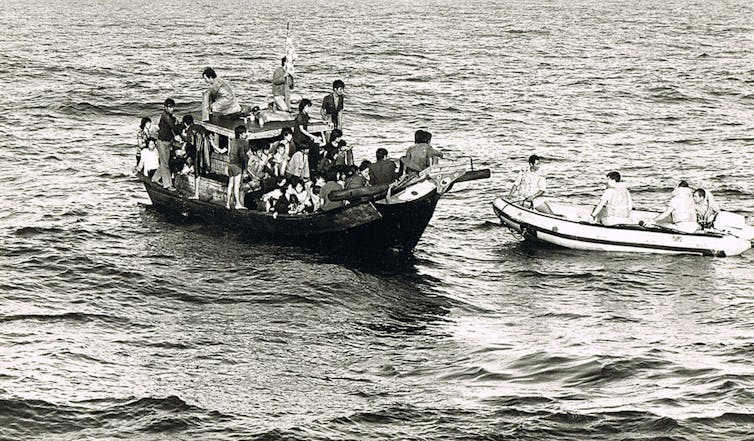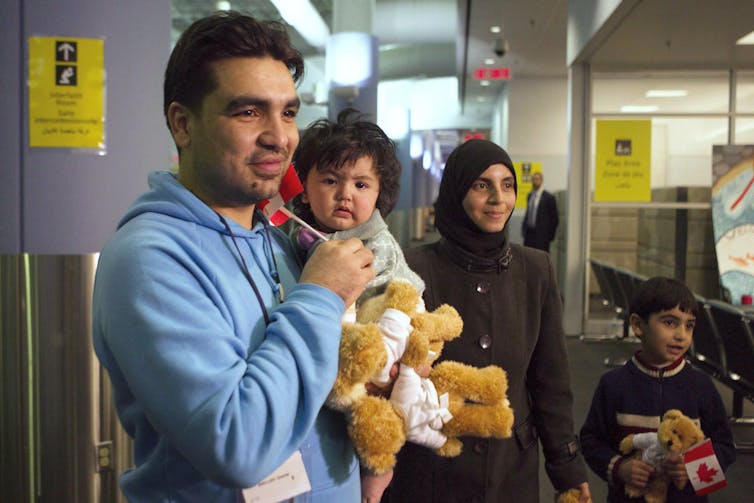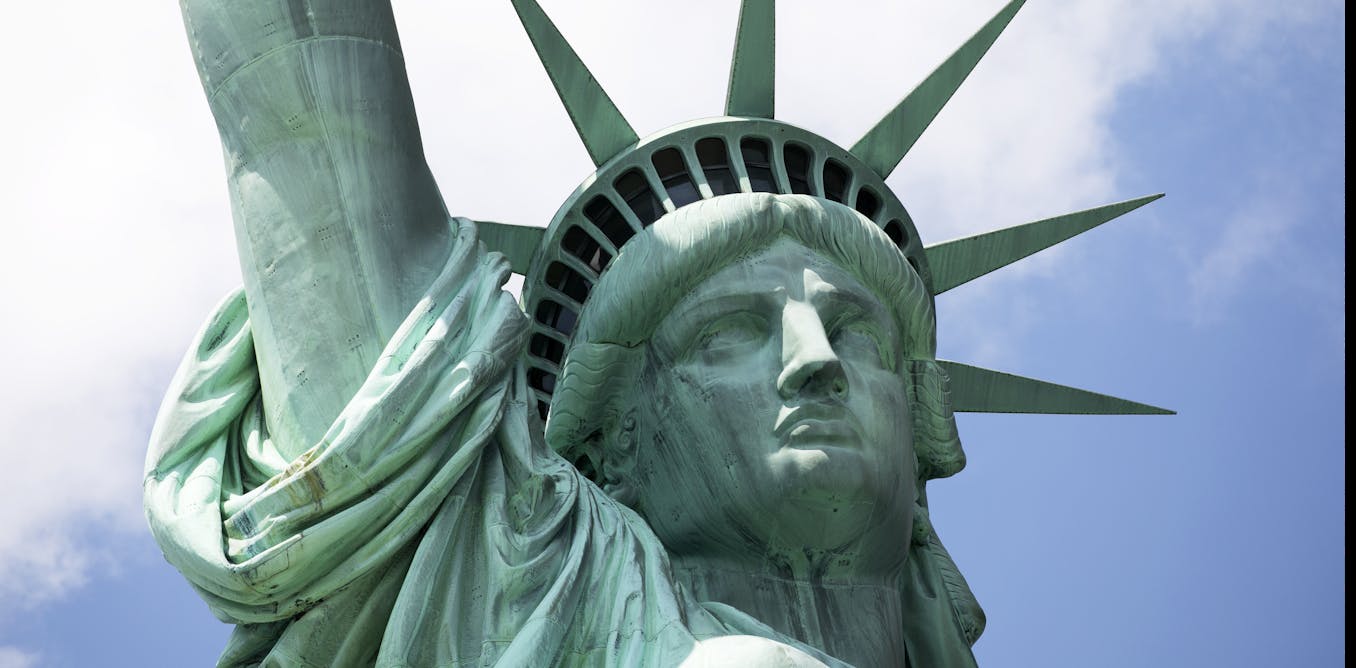As attention turns from the evacuation of Afghanistan to the arrival of refugees, US President Joe Biden has the opportunity for large-scale American public engagement in a deeply personal way.
If Canada’s history is any indicator, the capacity of private U.S. citizens to resettle refugees is large and untapped. It could even close the immigration divide in the United States.
Read more: The story of the world’s first private refugee sponsorship program
The day after the fall of Saigon in 1975, some 130,000 Vietnamese refugees have been lifted by sea and air to Guam and military bases in the southern United States. They were quickly resettled in the United States, Canada and other countries, and were soon followed by an even greater exodus of refugees from Cambodia, Laos and Vietnam.
(AP Photo / JT Wolkerstorfer)
Three million more refugees are said to be fleeing these countries as communist regimes consolidate their power. Many fled in dilapidated boats where nearly one in three was lost at sea. Others died of abuse and neglect in the camps, where they fell prey to hostile governments.
Despite the situation, the international community was slow to react – only 8,500 refugees were resettled in the four years between the fall of Saigon and May 1979. In Canada, the government of Pierre Trudeau had pledged to resettle 5,000 Indochinese refugees, but only 1,100 had arrived. Then something remarkable happened.
Canada takes to the skies
On the eve of a United Nations conference in Geneva to discuss the issue, Canada announced its intention to resettle 50,000 refugees by the end of 1980, which was only 18 months. This would later be revised to 60,000.
Equally amazing was his intention to relocate half of them through its new private refugee sponsorship program. Canadians from all walks of life, from rural Manitoba to cities in Toronto, could respond to the situation by volunteering their homes, funds and time to welcome and resettle Indochinese refugees.
This announcement coincided with the increase in Canadian support for refugee resettlement. In February 1979, 89 percent Canadians opposed inviting more refugees; only seven percent wanted more. Within months, the opposition had collapsed 38 percent, while 52 percent supported the increase in resettlement.
Groups ranging from churches to bowling clubs signed up to sponsor individuals and families, while the children sold lemonade at $ 50 a glass ($ 175 in 2021 dollars) to fund newcomers. The rural townships went to Ottawa to ask when they would receive their families, and the town halls which had been convened to discuss the subject of the refugees. turned into spontaneous sponsorship campaigns.

(Jesuit Refugee Service Asia-Pacific), CC BY
Matching sponsors and refugees
In Ottawa, the government was busy matching sponsors and refugees. a enterprising politician was inspired by the Berlin Airlift to avoid overcrowding at points of arrival. At the end of the 1940s during a Soviet blockade of Berlin, the Western allies routed continuous supplies to the airports in Berlin.
Thirty years later, the policy officer obtained one of Ottawa’s first computers that matched refugees with sponsors or immediately placed them in a government-subsidized pathway. This was aimed at ensuring the smooth transition of Indochinese refugees to their new homes.
Despite some setbacks, over 80 percent of eligible refugees were matched with sponsors before the planes landed, and by the end of 1980 all 60,000 had arrived. Adjusted for the terms of the 2020 U.S. population, that equates to nearly 890,000 resettled people in just 18 months.
Subsequent generations of Canadians responded with equal enthusiasm new arrivals from the former Soviet Union, Yugoslavia, Ethiopia and Syria, among others. Private sponsorship continues at a stable and moderate level during the years between crises, stimulated by cultural groups and family members of refugees, but when sudden and significant displacement attracts public attention, a large pool of godfathers for the first time is manifested.
Roughly five percent of the Canadian population sponsored a refugee, while millions more donated couches, money or labor.

THE CANADIAN PRESS / Chris Young
Bridging the American Divisions
Perhaps this large group of people with experience in refugee resettlement is one explanation for the positive attitudes of Canadians towards immigration. If so, the private resettlement of refugees is a policy that could bridge U.S. migration divisions.
It would also fill the void left by drastic cuts to the government-funded resettlement sector under Donald Trump’s previous administration. Evidence suggests that those sponsored under a private resettlement program are doing just as well, if not better.
Read more: Donald Trump’s ban will have lasting and damaging effects on the world’s refugees
In the midst of the Afghan crisis, several Critics of American immigration (including members of the previous administration) asked immigration advocates and the public if they really want refugees in their communities.
Contrary to their perceptions, polls suggest the answer is yes – relocation support for Afghan interpreters and other allies is around 81 percent and is exceptionally uniform from one affiliation to another.
Sixty-five percent support the expansion of resettlement to other Afghans, and 61 percent are in favor of welcoming refugees to their country of origin.
While the US State Department has announced his intention To start a private sponsorship program, its size or scope is not yet clear. The lessons of history teach us that a limited pilot program risks significantly under-utilizing America’s resettlement capacity.
Now is the time for Biden to ask the American people to invite homeless and war-ravaged Afghan refugees into their homes and communities. We have learned from experience that, like the Statue of Liberty, many will raise their hands with enthusiasm.

